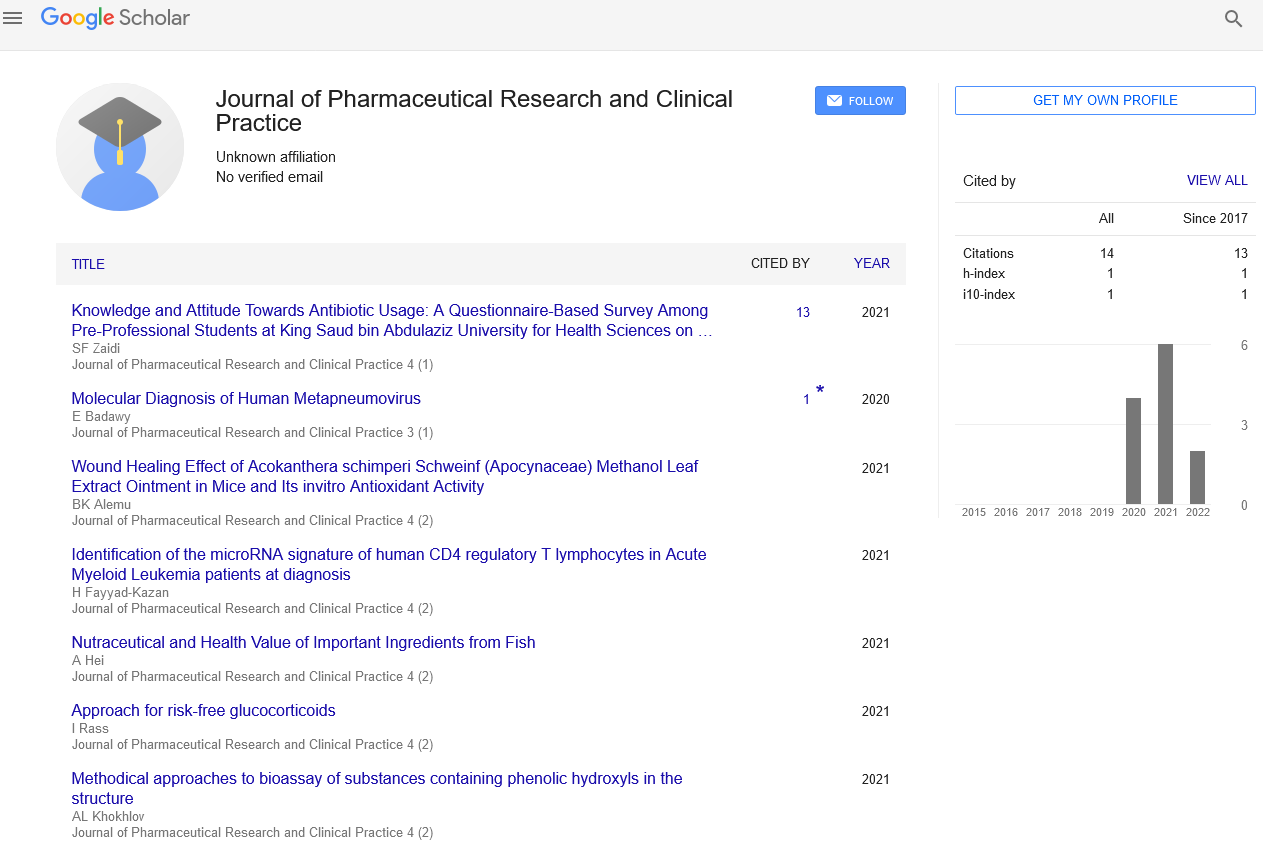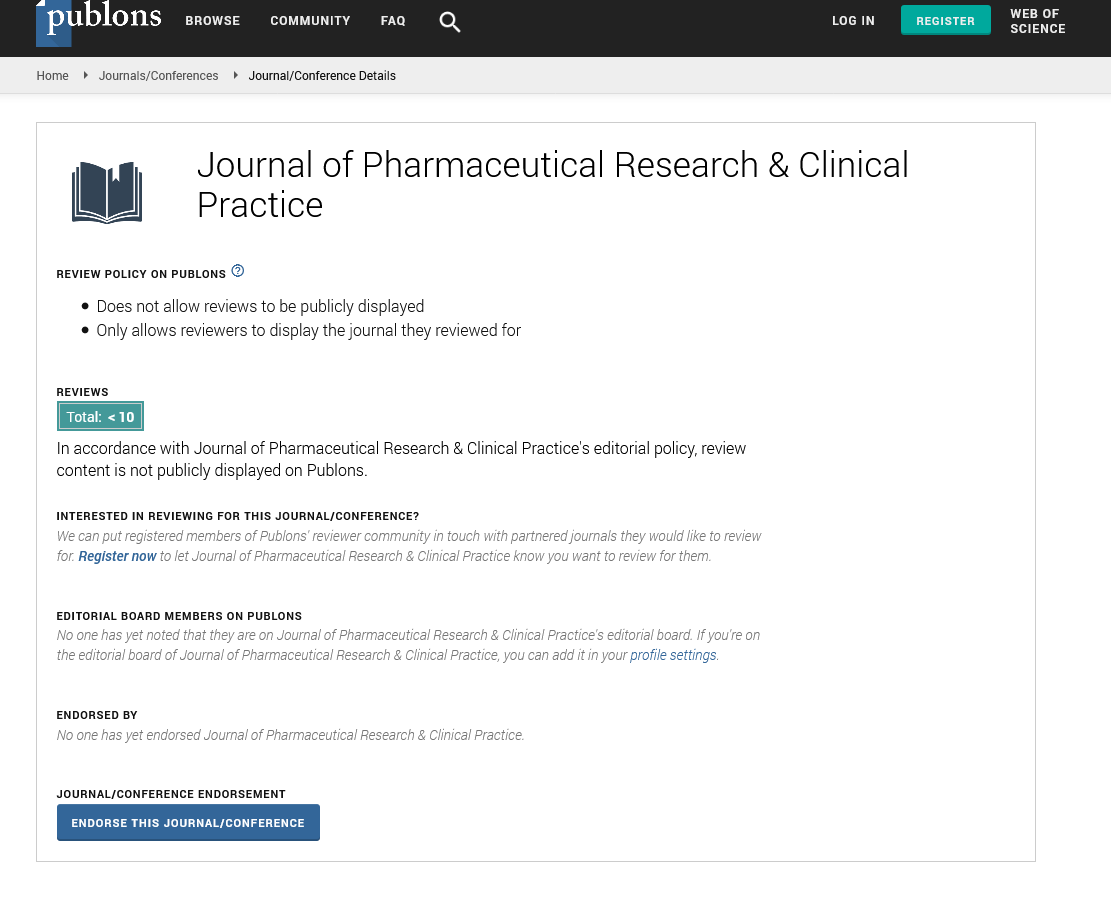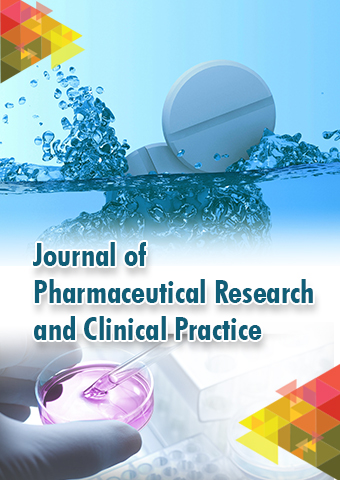Short Article - Journal of Pharmaceutical Research and Clinical Practice (2020) Volume 3, Issue 1
Isoniazid Induced Psychosis: A Case Report
Rohit Bangwal1*, Jagdish Rawat2, Yogesh Joshi3
Pharm. D (PB) Intern, Department of Pharmacy Practice, School of Pharmaceutical Sciences, Shri Guru Ram Rai University, Dehradun-248001, Uttarakhand, INDIA
Head & Professor, Department of Pulmonary Medicine, Shri Guru Ram Rai Institute of Medical & Health Sciences, Patel Nagar, Dehradun- 248001, Uttarakhand, INDIA
Assistant Professor, Department of Pharmacy Practice, School of Pharmaceutical Sciences, Shri Guru Ram Rai University, Dehradun-248001, Uttarakhand, INDIA
Abstract
Psychosis is a known complication of isoniazid drug therapy, although infrequent. Isoniazid is the first line anti-tubercular agent for the treatment of tuberculosis. Tuberculosis is an important public health problem. First line therapy for tuberculosis includes isoniazid, rifampicin, ethambutol and pyrazinamide. A 27 years old male patient, 45 kg weighing, developed psychosis by first line antitubercular drugs therapy (ATT). As a clinical pharmacist (health care team member), patient history was done, he was not taking regular doses of tab pyridoxine 20 mg with anti-tubercular drugs therapy. Pulmonologist withdrawn the tablet isoniazid and tablet pyridoxine was added in the therapy. Patient recovered from psychosis withdrawn the tablet isoniazid. Psychosis in a patient on ATT can be one of the complications of tablet isoniazid. Pulmonologist & Clinical Pharmacist (health care team members) should be aware of this adverse effect of isoniazid and that it may present with a broad clinical picture. We need to monitor the vitals and systems at risk at regular intervals during the therapy. As a clinical pharmacist role, we prevent and minimize drug induced complications & ADRs. Proper patient counselling & patient’s education is important for the better management of patients.
KEYWORDS:
Tuberculosis, Anti tubercular therapy, Isoniazid, Pyridoxine, Psychosis, Clinical Pharmacist.
INTRODUCTION
Psychosis is a severe mental disorder which causes people to perceive or interpret things differently from those who are around them. According to the National Alliance on Mental Illness, psychosis refers to an episode in which an individual has a break from reality. Drug-induced psychosis, also known as substance-induced psychotic disorder, is simply any psychotic episode that is related to the abuse of an intoxicant. Tuberculosis infects more than one-third of the population worldwide. Isonicotinic acid hydrazide or isoniazid (INH) was first discovered in 1912 and was later introduced by Robitzek more than half a century ago in 1952 for the treatment of tuberculosis. Tuberculosis is an important public health problem with more than one-third of the population in the world affected by the disease.1 Isoniazid also inhibits the activity of brain pyridoxal-5- phosphate (produced in the body from pyridoxine), which leads to a decrease in brain gamma-aminobutyric acid and other synaptic transmitters, resulting in neurologic ill effect. Isoniazid, as part of DOTS regimen, is the first line of drug and very commonly used. Adverse effects include hepatitis, peripheral neurotoxicity, lupus like syndrome, and central nervous system effects including dysarthria, seizures, irritability and even psychosis. First line therapy for tuberculosis includes isoniazid (5 mg/kg once a day), rifampicin (10 mg/kg once a day), ethambutol (15-25 mg/kg once a day) and pyrazinamide (20–30 mg/kg once a day).2 The common adverse effects of isoniazid are peripheral neuropathy, hepatitis, and rash. Rarely, psychosis, convulsions and even death have been reported. INH may cause psychosis by the inhibition of monoamine oxidase enzyme and decrease in N-Methyl D-Aspartate receptors caused by the INH induced oxidative stress.3 INH also interacts with the pyridoxine metabolism in the tissues to form a pyridoxal-INH complex which causes pyridoxine deficiency, that leads to the reduction in the concentration of inhibitory neurotransmitters. A case report of INH induced psychosis in tuberculosis patient is presented.4 ,5
CASE STUDY
✓ A 27-year-old male, 45 kg weighing was admitted in the tertiary care hospital with chief complaints of several episodes of vomiting, fever, pain in abdomen and difficulty in breathing with cough and irrelevant talking since for 2 days.
✓ Patient was known case of pulmonary Koch’s since for 25 days back diagnosed.
✓ He was taking on irregular anti-tubercular drugs therapy (ATT) and missing the dose of Tab pyridoxine.
✓ Patient was admitted Pulmonary isolation ward, and pulmonologist was started on Frist line anti-tubercular therapy isoniazid (300mg), rifampicin (450mg), ethambutol (1000mg) and pyrazinamide (1200mg) once daily and pyridoxine 20mg OD.
✓ For vomiting he was also given tablet pantoprazole and domperidone once daily, pulmonologist was showing the patient activity, abnormal behaviour with altered sensation, irrelevant talking for which psychiatric reference was done.
✓ Psychiatrist was advised computed tomographic examination of head (CT-head) and treatment with tab lorazepam 2mg at night and tab etizolam 0.25mg once daily was started, keeping the ATT (Isoniazid) on hold for the time being.
✓ The CT-head ruled out any acute infarct or similar organic cause so after a thorough neurological examination the patient was diagnosed with psychosis due to cause of ATT (Isoniazid).
✓ He was then started on injection dexamethasone 4mg thrice daily, injection mannitol 100ml intravenous thrice daily.
✓ On day four, isoniazid was excluded from the treatment and tablet pyridoxine 40mg once daily per orally was added.
✓ On day eight onwards the condition of the patient started improving.
✓ After full recovery he was discharged with the advice to continue modified ATT with pyridoxine and was subsequently called for review in the OPD.
DISCHARGE MEDICATION:
✓ Tab Rifampicin 450 mg OD
✓ Tab Pyrazinamide 1200 mg OD
✓ Tab Ethambutol 1000 mg OD
✓ Cap Pantra-DSR OD
✓ Syp Cody 2tsf TDS
✓ Tab Paracetamol 500 mg SOS
ADR ANALYSIS
Later on, assessing past and present medical and medication history from the patient, the developed ADRs is suspected with anti-tubercular drugs. After analysing the ADR profiles of the anti-tubercular drugs, it was found that the most probable drug i.e., isoniazid producing the psychosis. As a clinical pharmacist we made further assessment to build a relationship between the probable drug and the developed adverse reaction, through causality assessment with the help of Naranjo’s scale, WHO-UMC ADR assessing scale as well as Karch and lasagna scale which were represented in the below Table No.01.
ADR MANAGEMENT Usually, management of ADRs includes withdrawal/suspension, dose reduction of suspected/probable drug and administration of supportive therapy. Here in this issue, to treat ATT (Isoniazid) Induced psychosis the drug was withdrawn and a started modified ATT therapy was given.
CLINICAL PHARMACIST NOTES
❖ Tuberculosis is more prevalent in developing countries like India. Thus, pulmonologist & clinical pharmacist should be aware about the drug toxicity profiles of anti-tubercular drugs like INH.
❖ As a clinical pharmacist we advised the patients to review after 15 days in order to monitor his condition whether it perhaps improved or not after taking the supportive therapy and alteration of anti-tubercular with rifampicin, ethambutol, pyrazinamide and pyridoxine which were in the part of management of an adverse reaction.
RESULT & DISCUSSION
In substance induced psychotic disorders, it may not disappear immediately after removing the harmful agent and can persist for weeks or even longer. Depression, increased anxiety, emotional instability, depersonalization and consecutive amnesia may some times appear. Adverse drug reaction, intolerance and hypersensitivity reaction are well known for most medications, especially when used in high doses.
➢ Mechanism of neuronal toxicity due to isoniazid (INH) is not well defined. Destruction of vitamin B complex is well accepted mechanism in both acute psychosis and peripheral neuropathy due to INH.
➢ INH metabolites inhibit the activation of pyridoxine to pyridoxal 5-phosphate.
➢ Pyridoxal 5-phosphate is a cofactor of the enzyme glutamic acid decarboxylase which catalyses the conversion of glutamic acid to gamma aminobutyric acid (GABA), the major inhibitory neurotransmitter in the central nervous system.
➢ The resulting GABA depletion leads to central nervous system dis-inhibition and seizures, following INH overdose.
➢ Further, INH also inhibits monoamine oxidase and decreases the NMDA receptors by the inducing oxidative stress. A number of psychiatric symptoms have been previously described to be associated with INH including paranoid delusions, auditory, visual as well as tactile hallucinations, suicidal ideation and mood disorders.
➢ Cases of isoniazid-related psychiatric disorders reported in the literature include psychosis, obsessive–compulsive neurosis, and mania.1,3,9
➢ The susceptibility to psychosis increases with age, personal and family history of psychiatric disorders, malnutrition, alcohol intake, diabetes, renal/ hepatic insufficiency, hyperthyroidism, etc.1
➢ Since this patient had not been taking the pyridoxine supplementation there was predisposition to central nervous system adverse effects.
➢ Conditions leading to vitamins and amino acids deficiency may inhibit neurotransmitter (GABA) synthesis and may precipitate psychosis like condition.
➢ Supplementation of pyridoxine with INH is rational to prevent neurological adverse effects such as acute psychosis and peripheral neuropathy.10,11
CONCLUSION
✓ DOTS therapy has definitely proven to be effective in term of cure rates but owing to the high doses of the drugs, tolerance and complication is a concern. In this case condition was resolved only after discontinuation of the drug.
✓ Pyridoxine tablet should be added to the ATT regimen as a prophylaxis to prevent neurological complications viz. peripheral neuropathy and acute psychosis.
✓ To prevent and minimize drug induced complications and for better management we need to monitor the vitals and systems at risk at regular intervals during therapy.
✓ Thus, pulmonologist & clinical pharmacist should be aware about the drug toxicity profiles of anti-tubercular drugs like INH. This case report thus highlights the psychiatric clinical presentation following INH initiation and adds to further
✓ literature on INH inducing psychosis.
✓ Patients undergoing treatment for tuberculosis needs health education in detail concerning not only adherence and the benefits of ATT but also the side effects.
✓ As a health care team members pulmonologist & clinical pharmacist are needs to be made aware of these potentially fatal adverse effects associated with anti-tubercular therapy via conduction of quality-based seminars, published medical literature, learning programs, health care camps & conferences.
CONFLICT OF INTEREST
The authors report no conflict of interest that is directly relevant to the content of the case report.
ACKNOWLEDGEMENT
Authors are highly and sincerely thankful to management and supporting staff of university and hospital for providing the necessary platform to pursue such conduct as a part of pharmacy practice curriculum.
However, another synthetic lethal interaction was recently detected in human BRCA1/2-competent cancer cells, suggesting that synthetic lethality is not restricted to BRCAness but can be also induced in neoplastic cells defective in other components of the DNA repair machinery, alternatively by transient inactivation of BRCA1/2 proteins. Targeted exploitation of characteristic deficiencies in DNA repair mechanisms in specific cancers may thus enable the development of efficient and selective cancer therapies.


